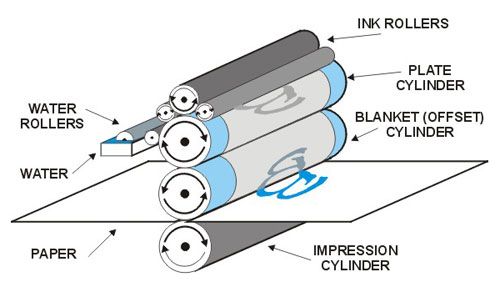Why litho printing Is Perfect for High-Volume Print Runs
Why litho printing Is Perfect for High-Volume Print Runs
Blog Article
A Comprehensive Overview to Understanding Litho Printing Methods
The globe of litho printing, a method stemming from the late 18th century, is a remarkable mix of background, art, advancement and science. This thorough guide will unwind the intricacies of this printing method, from the structure of litho inks to the challenges faced in modern-day applications. As we venture right into the details of lithography, the relevance of automation and sustainability in guaranteeing its future significance becomes increasingly clear. Stick with us as we journey right into the fascinating world of litho printing.
The Historic Evolution of Litho Printing
The historic trajectory of litho printing, an essential development in the realm of interaction, is a fascinating story of human ingenuity. Birthed in the late 18th century by Alois Senefelder, this strategy was at first an economical method of publishing theatrical works. Lithography, stemmed from the Greek words for 'stone' and 'to write', made use of a smooth rock surface to move images onto paper. The procedure progressed with the introduction of the rotating press, which significantly increased efficiency (litho printing). In the 20th century, the advancement of offset lithography changed the market, permitting automation of high-quality prints. Each phase of litho printing's evolution showcases humanity's unrelenting pursuit of performance and high quality in aesthetic interaction.
Decoding the Scientific Research Behind Litho Printing Inks
Relocating forward in the expedition of litho printing methods, the focus now shifts to the science behind litho printing inks. The make-up of these inks, their drying procedure, and shade mixing techniques develop the foundation of this intricate art form. Comprehending these components is important to understanding the craft and accomplishing the wanted print results.
Make-up of Litho Inks
In lithographic printing, the essential duty of litho inks can not be overemphasized. Pigments, the color-providing elements, are carefully ground particles suspended in the car, a liquid that brings the pigment onto the printing surface area. Each element plays a crucial component in the final print's high quality, making the exact solution of litho inks an intricate science.
Ink Drying Refine
From the make-up of litho inks, focus transforms to the fascinating process of ink drying out. The drying procedure is critical, as it influences the last print's top quality and long life. 2 main approaches are used in litho printing: oxidative drying out and absorption. Oxidative drying out entails the ink responding with oxygen in the air to form a hard, dry movie. This approach provides a long lasting coating, but can be slower compared to absorption. Absorption, on the other hand, includes the ink seeping right into the paper fibers, which is a faster procedure yet can lead to less lively colors. The selection between these techniques depends on aspects such as print rate needs, the paper type used, and the wanted surface.
Color Combining Techniques
While the drying out process plays a vital role in litho printing, the scientific research of color mixing strategies holds equivalent importance. The science behind litho printing inks also takes right into account the openness of the ink, which influences how colors overlay and mix.
The Art and Layout Elements in Litho Printing
Litho printing takes a breath life into art and design with its distinct elements. Litho printing accommodates a range of colors, enabling musicians to produce vibrant and dynamic prints. This mix of precision and versatility makes litho printing a recommended option for numerous artists and designers.
Modern Applications of Litho Printing Strategies
Litho printing strategies have found considerable usage in the contemporary business industry. Its impact and value continue to grow with the introduction of brand-new developments and modern technologies in the area. This area will check out these contemporary applications and the transformative function they play in the printing sector.
Business Litho Printing Uses
In today's digital age, one may question the importance of traditional printing methods. Litho printing stays a critical part of the commercial field. High-volume printing tasks, such as the manufacturing of publications, papers, and product packaging, rely on litho printing for its ability to provide superior photo top quality and expense efficiency. The procedure, which entails transferring an inked photo from a plate onto a rubber covering and after that to the printing surface, uses unequaled consistency. This makes it perfect for tasks needing a big print run. Litho printing likewise supplies a wide shade spectrum, superior to that of electronic printing. This makes it the go-to option informative post for tasks that require lively, top notch shade recreation.
Advancements in Litho Printing
Pressing the limits of conventional methods, contemporary improvements have actually sustained a host Read Full Article of innovations in litho printing. One famous development is digital litho printing, which incorporates the merits of electronic modern technology with litho's top notch result. These technologies underscore the long-lasting importance of litho printing in the modern-day world.
Discovering the Process of Litho Printing: Step by Action

Obstacles and Solutions in Contemporary Litho Printing

In spite of the precision and practice that litho printing happily upholds, it is not without its set of contemporary obstacles. Digital litho printing permits for cost-efficient short runs and very easy personalization, addressing the issue of variable information. Hence, while there are obstacles, the litho printing industry is proactively adjusting to satisfy them head-on, ensuring its significance in the future.
Final thought
Finally, litho printing, with its abundant background and clinical complexities, holds a significant area in the print sector. As the guide exposes, it's a synthesis of art and technology, with modern-day innovations guaranteeing its importance. Nonetheless, the market deals with challenges that call for ingenious options, with a concentrate on automation and sustainability. The future of litho printing depends upon its ability to adapt to these transforming needs, verifying its view it now enduring worth in a developing market.

Report this page